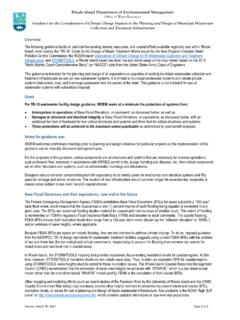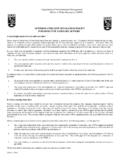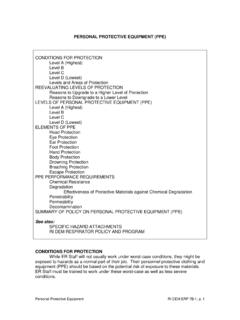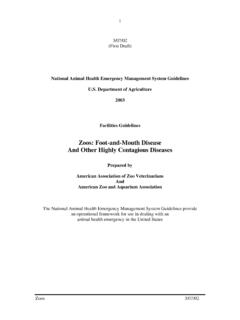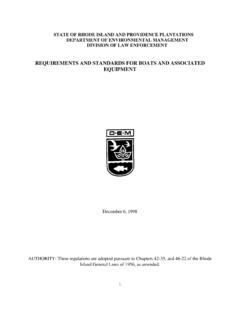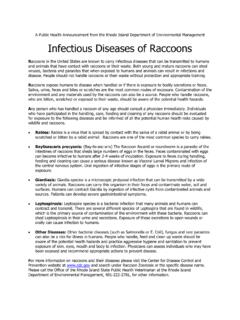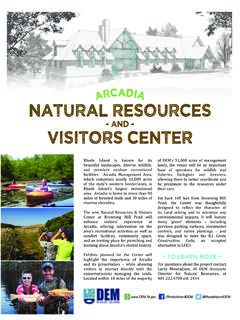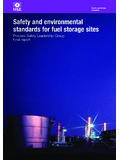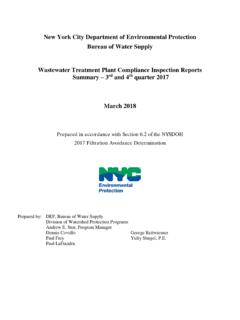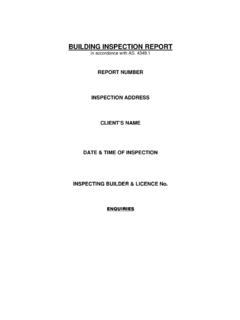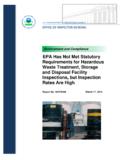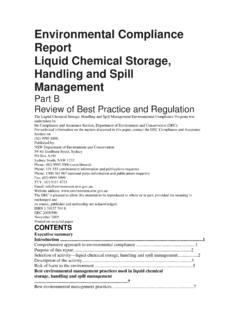Transcription of BY M. JAMES RIORDAN - Rhode Island Department …
1 septic system checkup : THE Rhode Island HANDBOOK. FOR inspection . BY. M. JAMES RIORDAN . LAYOUT DESIGN AND DRAWINGS BY. ANNE SHERMAN JETT. Funded by DEM using a grant from the environmental Protection Agency Clean Water Act, section 319. You can observe a lot by watching.. Yogi Berra, 1968. TABLE OF. CONTENTS. PREFACE 1. ACKNOWLEDGMENTS 3. CHAPTER 1 Inspecting Operating septic Systems: An Overview 5. Types of Inspections 6. Maintenance inspections 6. Functional inspections 8. Types of septic Systems and How Their Workings 13. Cesspools 13. Conventional septic systems 15. CHAPTER 2 Gathering Records and Data for Inspections 19. Acquiring Records from DEM 20. system conformance and construction 20. Determining system history (optional) 21.
2 Acquiring the most recent system drawings 22. Acquiring Information from Community Officials 22. Interviewing system Owners 23. CHAPTER 3 In-Home Plumbing Evaluation 25. Wastewater Routing 25. Estimating Water Use 26. Estimating water use with a water meter 26. Estimating water use in unmetered homes 28. Reducing excessive water use 29. Leak Diagnosis and Repair 30. Measuring flow rate 30. Toilets 31. Faucets 33. Water treatment appliances 34. Retrofitting Household Fixtures with Water Conservation Devices 36. CHAPTER 4 Techniques for Accessing septic system Components 37. Locating septic Tanks and Cesspools 37. Locating Distribution Boxes and Soil Absorption Systems 39. Opening and Closing Component Accesses 40. Accesses at grade 40.
3 Buried accesses 41. Suggested Retrofits for Conventional septic Systems 42. Risers to grade 43. Effluent filters and gas baffles 44. CHAPTER 5 Evaluation and Maintenance Procedures for septic system 45. Components Inspecting and Maintaining septic Tanks 45. Examining the external condition of septic tanks 45. Determining when conventional tanks need pumping 45. Cleaning sludge and scum measuring devices 48. Pumping need for metal tanks 49. Pumping septic systems automatically as part of the first maintenance inspection 49. Procedures for multicompartment tanks or septic tanks in series 49. Procedures for cleaning effluent filters 50. Pumping procedures for septic tanks 51. Determining septic tank volume (optional) 53. septic system additives 54.
4 Procedures for Maintaining Distribution Boxes if an inspection Port is Present 55. Maintenance inspection for Cesspools 55. inspection prior to pumping 56. Pump the cesspool regardless of solids depth 56. Cesspools with overflow pipes and other outlets 56. Observation of Site Conditions 57. Flow Trial for Identifying Gross Loss of Hydraulic Capacity 59. Limitation of the flow trial 59. Calculating the flow trial volume 61. Flow trial procedures 61. Dye Tracing for Confirming Treatment Bypasses 63. Identifying suspected treatment bypasses 63. Checking catch basins for bypasses 64. Investigating suspected bypasses 67. Preparation of dye-tracing solution 68. CHAPTER 6 Scheduling Maintenance Inspections 71. Conventional Systems Serving Single-Family Homes 71.
5 Conventional systems serving 1-2 persons per bedroom 71. Conventional systems serving 1 person per bedroom or less 72. Effect of garbage grinders on maintenance 72. Nonconventional Systems Serving Single-Family Homes 73. Cesspools and other substandard systems 73. Alternative systems 73. Special Consideration for Systems Serving Rental Properties 74. Suggested Policy for Scheduling Inspections in Community Programs 74. Evaluation of inspection Schedules 76. GLOSSARY OF TERMS 79. BIBLIOGRAPHY 87. septic system MAINTENANCE POLICY FORUM AND SUBCOMMITTEES 95. PREFACE. How should septic systems1 be maintained? How can one determine if a given septic system is working when purchasing a home? septic system checkup answers these questions by providing state-recommended standards for evaluating and maintaining septic systems that serve residences in Rhode Island .
6 The handbook includes complete instructions for gathering septic system records, locating components, diagnosing minor in-home plumbing problems, conducting flow trials, dye tracing, and maintenance scheduling. It describes two types of inspections: (1) a maintenance inspection to determine the need for pumping and minor repairs; and (2) a functional inspection for use during property transfer. septic system checkup is for everyone with an interest in ensuring septic system function. Home inspectors should use it to determine if a system is adequate to serve the needs of a prospective buyer. Homebuyers will find it useful in learning how septic systems should be evaluated. Maintenance professionals should use septic system checkup to determine the need for routine maintenance as well as repair.
7 Community officials will find the handbook helpful in developing septic system maintenance programs. And do-it-yourselfers can use the handbook for instruction on how to conduct their own routine inspections. 1. This handbook applies to conventional septic system components and cesspools. Those readers interested in inspection and maintenance of innovative and alternative components should refer to the specific system 's permit stipulations and manufacturer instructions. 1. 2. ACKNOWLEDGEMENTS. septic system checkup : The Rhode Island Handbook for inspection and inspection report Forms were authored by M. JAMES RIORDAN , Principal environmental Scientist of the Office of Water Resources, Department of environmental Management.
8 Mr. RIORDAN also oversaw all aspects of their development. During development, Mr. RIORDAN was supervised--and generously mentored--by Russ Chateauneuf, Division Chief of the Office of Water Resources, Sue Kiernan, Deputy Division Chief of the Office of Water Resources and Scott Millar, Supervising environmental Scientist of the Office of Strategic Planning and Policy (who originated the concept of a septic system inspection handbook for Rhode Island ). Layout, design and graphic artwork for the handbook and report forms were all done by Anne Jett. Ms. Jett also devoted countless hours as one of the septic system checkup 's primary reviewers and editors. Without her assistance, septic system checkup would have remained unmanifest.
9 Development of septic system checkup occurred in cooperation with Rhode Island 's septic system Maintenance Policy Forum. The policy forum is a roundtable group that comprises approximately 100 representatives from federal, state and local government, as well as private associations, businesses and general public. The policy forum operates on a consensus-based approach. The meetings are open to all interested parties. It has met seventeen times since its inception in 1995. The cooperative spirit of the policy forum and dedication of all its participants has been no less than critical to successful development of septic system checkup . A list of the attendants of the policy forum can be found in septic system Maintenance Policy Forum and Subcommittees at the rear of the handbook.
10 3. Several individuals provided particularly significant time and effort towards the development of the procedures of septic system checkup as well as the science behind septic system inspections in general. They include Bob Schmidt and Peter O'Rourke of the Rhode Island Department of environmental Management; George Loomis and David Dow of the University of Rhode Island ; and Joe Frisella of Frisella Engineering, Dave Burnham of the Rhode Island Independent Contractors and Paul Brunetti of Griggs and Browne. septic system checkup would not have been possible without the benefit of their knowledge and generosity of time. Many others have also contributed to septic system checkup by reviewing the document, discussing issues with the author and providing emotional support (here especially, Jody-Kay RIORDAN , the author's wife).
